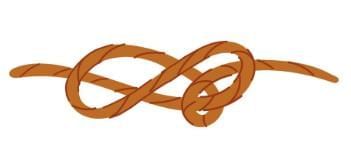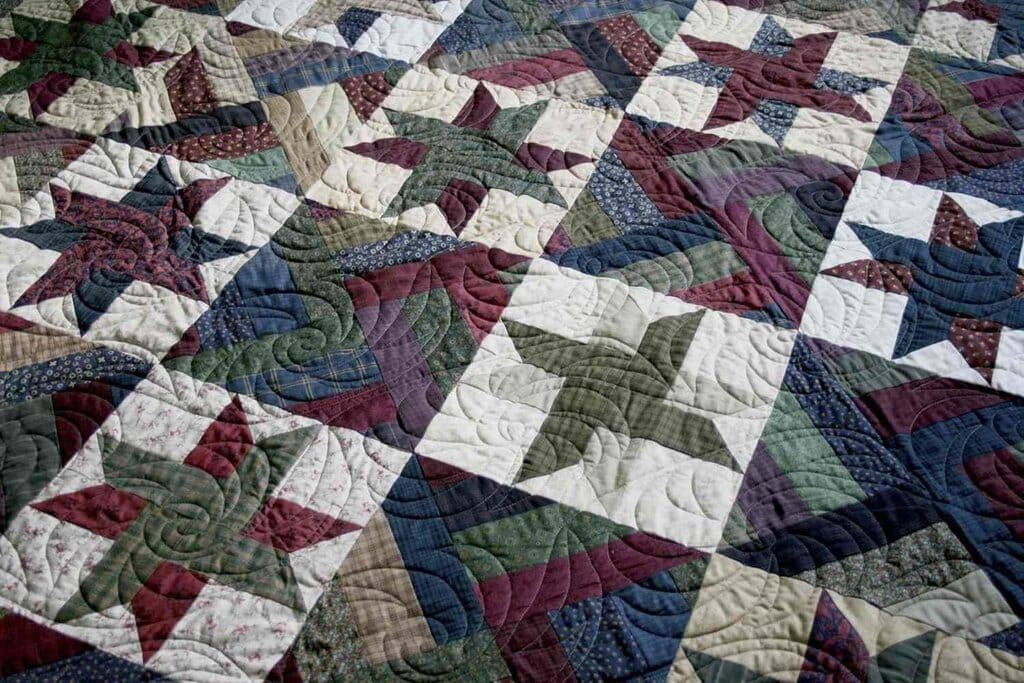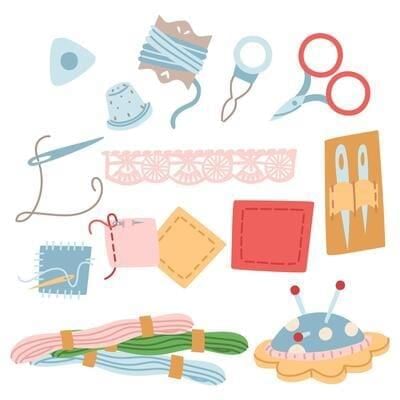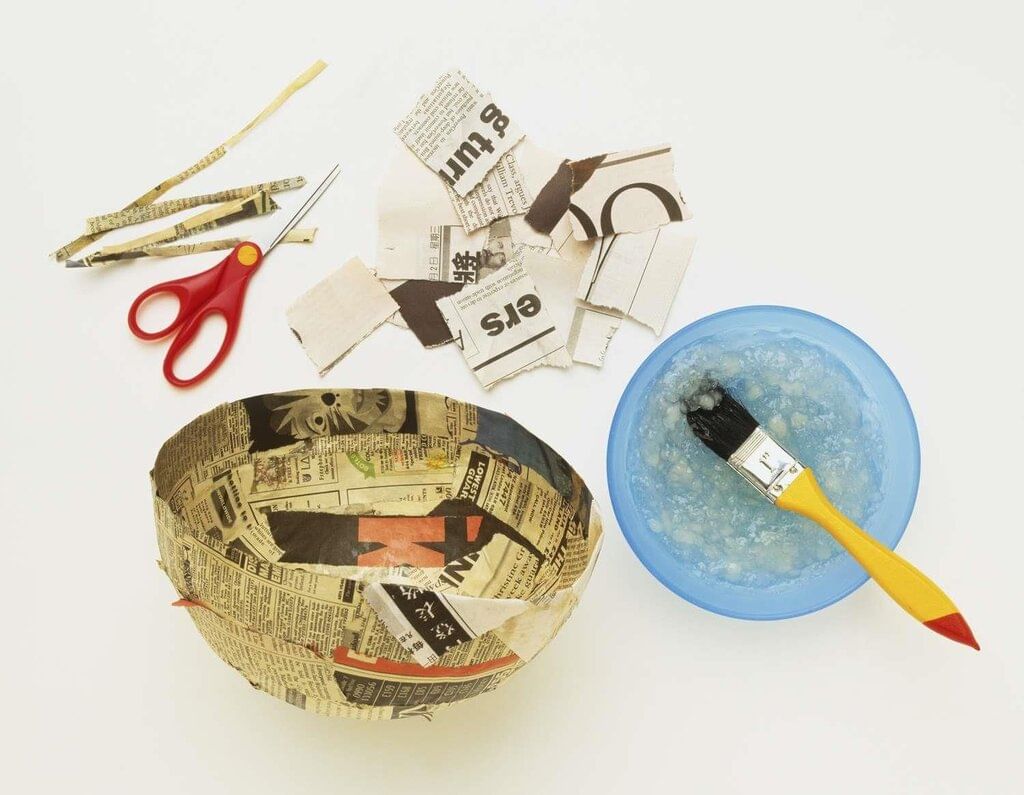Class 8 Exam > Class 8 Notes > Arts (Kriti) Class 8 - New NCERT > Chapter Notes: Arts of the People, With the People, For the People
Arts of the People, With the People, For the People Chapter Notes | Arts (Kriti) Class 8 - New NCERT PDF Download
| Table of contents |

|
| Introduction |

|
| Learn the Art of Knotting |

|
| Learn to Sew Patches |

|
| Learn to Make Papier-Mâché |

|
Introduction
Art has been part of human life for centuries, connecting people across time. It evolves as per changes in tools, materials, technology, and society. Art makes us reflect on our lives and emotions and is present in everything around us – from the clothes we wear to the plates we use. This chapter explores various art forms created using everyday materials like thread, paper, and cloth, and highlights the dedication of artists who have preserved these traditions.
Tie and Link
- Nature creates intricate connections among living beings, such as roots of trees that sustain life even when hidden underground.
- The Indian rubber tree in Meghalaya has strong secondary roots that grow above ground.
- People in the region train these roots to form bridges across streams and rivers, known as Living Root Bridges.
- Creating these bridges takes many years as roots are twisted, tied, and supported at various points. They become stronger as the roots grow.
- Techniques like twisting, knotting, crocheting, knitting, and weaving are used by artists to make baskets, handloom fabric, fans, and charpoys.
- These are functional objects created by people for everyday use.
Learn the Art of Knotting

- Knotting can be used to make small items like friendship bands, wristbands, and rakhis.
- Steps involve creating knots, adding decorations like coloured beads, and using different colours.
- By continuing the knotting process, larger pieces like wall hangings and torans can be created.
Patch and Match

- Patchwork is a technique where small pieces of fabric are joined and sewn together to create a large piece.
- It is used worldwide to make blankets, cradles, bags, cushion covers, table mats, and dhurries.
- In many parts of India, women collect old fabric fragments and quilt them together.
- Patchwork quilts often hold shared memories, symbolising unity in diversity.
- Each person in society is like a piece of a patchwork quilt, contributing equally to the overall picture.
Learn to Sew Patches

- Collect old fabric pieces not in use anymore, including a base cloth of at least 30 cm × 30 cm.
- Cut smaller pieces into squares or rectangles of around 5–6 cm.
- Arrange them on the base cloth in an interesting pattern.
- Sew the small pieces together along their edges on the reverse side.
- Place the completed patchwork on the base cloth and secure it with running stitches, using coloured threads for decorative patterns.
- Close the quilt edges with another piece of cloth or by folding and stitching.
- Some quilting artists make elaborate pictures and visual stories using patchwork techniques.
Pulp and Paint

- Old newspapers are often discarded or reused for packaging, but they can also be used for art.
- Papier-mâché is a technique that uses a mixture of paper, water, and glue to create strong, three-dimensional forms.
- These forms are inspired by the artist’s environment and culture, and are painted with local pigments.
- Motifs and patterns vary from region to region despite using the same papier-mâché base.
- Papier-mâché is widely practised in many parts of India and has travelled across regions over time.
Learn to Make Papier-Mâché
Work in small groups to create a small form using papier-mâché by following these steps:
- Step 1: Cut old newspapers into small pieces or strips and soak them in water for a few days in a large tub or container.
- Step 2: Remove the soaked paper and squeeze out any excess water.
- Step 3: Mash or crush the paper into a pulp. You can use a mortar and pestle for grinding it manually.
- Step 4: Add a small amount of glue to the paper pulp and mix it thoroughly.
- Step 5: Take a small bowl or another shallow object to use as a mould. Coat its outer surface with a greasy substance like petroleum jelly or thick oil.
- Step 6: Flip the object upside down. Take damp strips of newspaper and place them in overlapping layers over the object until it is completely covered. Apply the pulp evenly and thickly over the entire surface. Allow it to dry completely for a few days.
- Step 7: Once it is dry, turn the object over and carefully remove the mould.
- Step 8: Smooth out your papier-mâché creation using fine sandpaper, then add color and decorations to finish it off.
The document Arts of the People, With the People, For the People Chapter Notes | Arts (Kriti) Class 8 - New NCERT is a part of the Class 8 Course Arts (Kriti) Class 8 - New NCERT.
All you need of Class 8 at this link: Class 8
|
76 docs|19 tests
|
FAQs on Arts of the People, With the People, For the People Chapter Notes - Arts (Kriti) Class 8 - New NCERT
| 1. What are some basic techniques for knotting that beginners should learn? |  |
Ans. Beginners should start with fundamental knotting techniques such as the square knot, bowline knot, and clove hitch. The square knot is used for tying two ends of rope together, the bowline creates a fixed loop at the end of a rope, and the clove hitch is useful for securing a rope to a post or tree. Practice these knots to develop confidence and skill.
| 2. How can I properly sew patches onto clothing? |  |
Ans. To sew patches onto clothing, first, position the patch where you want it on the fabric. Use pins or fabric adhesive to hold it in place. Then, using a needle and thread, make small, even stitches around the edge of the patch. A zigzag stitch can help secure the patch well, while also preventing fraying. Finally, tie off the thread securely to ensure durability.
| 3. What materials are needed for making papier-mâché? |  |
Ans. To make papier-mâché, you will need strips of paper (newspaper works well), a mixture of water and glue or flour, and a mold or base for shaping your project. Optional materials can include paint for decoration and varnish for a finished look. Ensure your workspace is covered to avoid mess.
| 4. What are the historical origins of knotting as an art form? |  |
Ans. Knotting has a rich history, with evidence of its use dating back thousands of years in various cultures for practical purposes such as fishing and sailing. It evolved into an artistic expression in many societies, with intricate knots being used for decorative purposes, ceremonial items, and traditional crafts, illustrating the connection between utility and artistry.
| 5. Why is papier-mâché considered an accessible craft for all ages? |  |
Ans. Papier-mâché is considered accessible because it uses simple, inexpensive materials that are readily available. The technique is easy to learn, making it suitable for various skill levels, from children to adults. Additionally, it encourages creativity and can be adapted for numerous projects, such as masks, sculptures, and decorative items.
Related Searches














